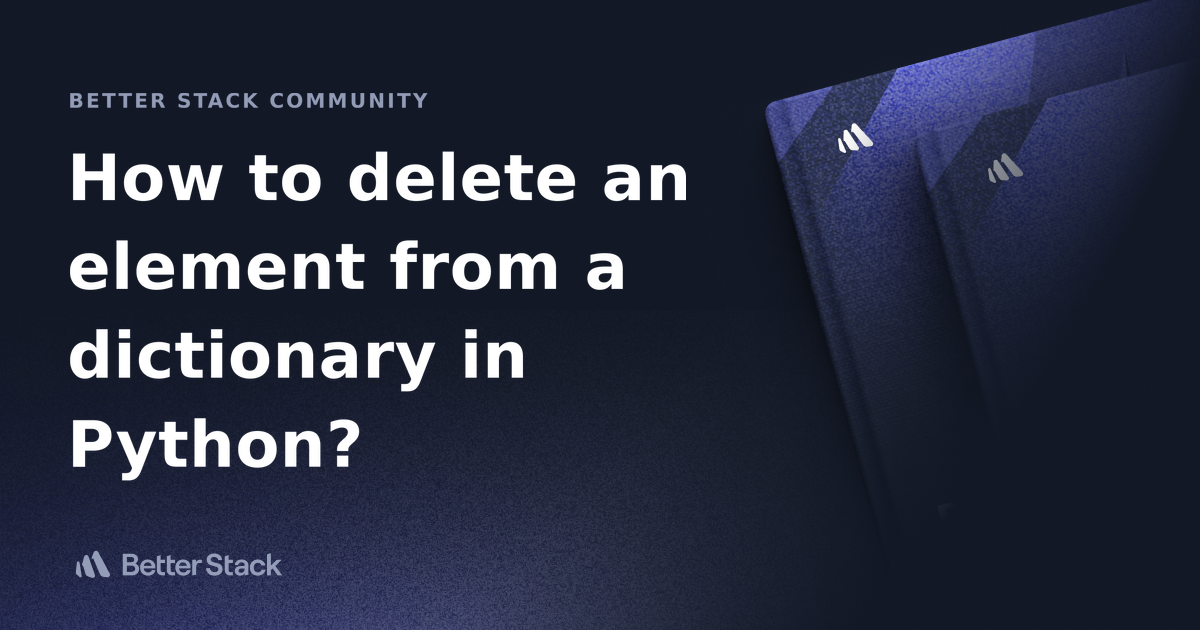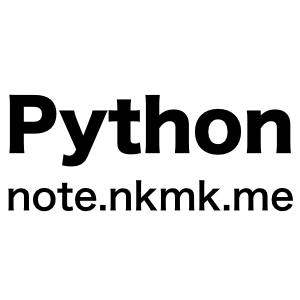Python Delete Dictionary Element: Easy Guide & Examples
Learn how to effectively remove elements from dictionaries in Python using various methods and best practices.
Learn how to effectively remove elements from dictionaries in Python using various methods and best practices.
Dictionaries in Python are collections of key-value pairs. You can define a dictionary using curly braces {}. Each key-value pair is separated by a colon :. This article explains how to remove elements from a dictionary using the del keyword in Python.
First, define a dictionary. For example:
my_dict = {'apple': 1, 'banana': 2, 'cherry': 3}To delete an element from the dictionary using the del keyword, specify the key of the element you want to remove inside square brackets after the del keyword and the dictionary name. For example, to remove the element with the key 'banana':
del my_dict['banana']Now, if you print the dictionary:
print(my_dict)The output will be:
{'apple': 1, 'cherry': 3}
The del keyword removes the key-value pair associated with the specified key from the dictionary. If the key is not found in the dictionary, it raises a KeyError.
This Python code demonstrates how to remove an element from a dictionary. It first defines a dictionary with three key-value pairs. Then, it uses the "del" keyword to delete the element with the key "banana". Finally, it prints the updated dictionary, which no longer contains the deleted element.
# Define a dictionary
my_dict = {'apple': 1, 'banana': 2, 'cherry': 3}
# Delete the element with the key 'banana'
del my_dict['banana']
# Print the updated dictionary
print(my_dict) # Output: {'apple': 1, 'cherry': 3}Explanation:
my_dict = {'apple': 1, 'banana': 2, 'cherry': 3}: This line creates a dictionary named my_dict with three key-value pairs: 'apple': 1, 'banana': 2, and 'cherry': 3.
del my_dict['banana']: This line uses the del keyword to remove the element with the key 'banana' from the my_dict dictionary.
print(my_dict): This line prints the updated my_dict dictionary. Since the element with the key 'banana' has been deleted, the output will be {'apple': 1, 'cherry': 3}.
Alternatives to del: While del is a direct way to remove elements, Python offers other methods like .pop() and .popitem() which provide more control and flexibility in certain scenarios.
Mutability: Remember that dictionaries are mutable, meaning del modifies the dictionary in-place. Any other variables referencing the same dictionary will see the changes.
Use Cases: Deleting dictionary elements is common when you need to clean up data, remove unnecessary information, or dynamically manage key-value pairs based on program logic.
Error Handling: For robust code, consider using a try...except block to gracefully handle potential KeyError exceptions that might arise if the key is not found.
Visual Analogy: Think of a dictionary like a real-world dictionary. del is like tearing out a page – it's gone for good.
Efficiency: del is generally an efficient operation, especially for larger dictionaries. However, if you're performing many deletions, other data structures might be more performant.
| Action | Description | Code Example | Output |
|---|---|---|---|
| Define a dictionary | Creates a dictionary with key-value pairs. | my_dict = {'apple': 1, 'banana': 2, 'cherry': 3} |
{ 'apple': 1, 'banana': 2, 'cherry': 3 } |
Delete an element using del |
Removes the key-value pair associated with the specified key. | del my_dict['banana'] |
{ 'apple': 1, 'cherry': 3 } |
| Result | The dictionary after deleting the element. | print(my_dict) |
{ 'apple': 1, 'cherry': 3 } |
| Note | Raises a KeyError if the specified key is not found in the dictionary. |
In conclusion, the del keyword in Python provides a straightforward method for removing elements from dictionaries based on their keys. Understanding its usage, potential errors like KeyError, and alternatives like .pop() empowers developers to manipulate dictionaries effectively. Dictionaries are fundamental data structures in Python, and mastering element deletion is essential for tasks ranging from data cleaning to dynamic program logic.
 Python | Ways to remove a key from dictionary - GeeksforGeeks | A Computer Science portal for geeks. It contains well written, well thought and well explained computer science and programming articles, quizzes and practice/competitive programming/company interview Questions.
Python | Ways to remove a key from dictionary - GeeksforGeeks | A Computer Science portal for geeks. It contains well written, well thought and well explained computer science and programming articles, quizzes and practice/competitive programming/company interview Questions. Python Removing Items from a Dictionary | W3Schools offers free online tutorials, references and exercises in all the major languages of the web. Covering popular subjects like HTML, CSS, JavaScript, Python, SQL, Java, and many, many more.
Python Removing Items from a Dictionary | W3Schools offers free online tutorials, references and exercises in all the major languages of the web. Covering popular subjects like HTML, CSS, JavaScript, Python, SQL, Java, and many, many more. How to delete an element from a dictionary in Python? | Better Stack ... | Better Stack lets you see inside any stack, debug any issue, and resolve any incident.
How to delete an element from a dictionary in Python? | Better Stack ... | Better Stack lets you see inside any stack, debug any issue, and resolve any incident. Remove an item from a dictionary in Python (clear, pop, popitem, del ... | In Python, you can remove an item (key-value pair) from a dictionary (dict) using the clear(), pop(), popitem() methods, or the del statement. You can also remove items that satisfy the conditions usi ...
Remove an item from a dictionary in Python (clear, pop, popitem, del ... | In Python, you can remove an item (key-value pair) from a dictionary (dict) using the clear(), pop(), popitem() methods, or the del statement. You can also remove items that satisfy the conditions usi ... Python Remove Key from Dictionary – How to Delete Keys from a Dict | By Shittu Olumide Dictionaries are a useful data type in Python for storing data in a key-value format. And there are times when you might need to remove a particular key-value pair from a dictionary. You'll learn some dictionary basics, as well as ...
Python Remove Key from Dictionary – How to Delete Keys from a Dict | By Shittu Olumide Dictionaries are a useful data type in Python for storing data in a key-value format. And there are times when you might need to remove a particular key-value pair from a dictionary. You'll learn some dictionary basics, as well as ... Dictionary Tutorials & Notes | Python | HackerEarth | Detailed tutorial on Dictionary to improve your understanding of Python. Also try practice problems to test & improve your skill level.
Dictionary Tutorials & Notes | Python | HackerEarth | Detailed tutorial on Dictionary to improve your understanding of Python. Also try practice problems to test & improve your skill level. Python Program to Delete an Element From a Dictionary | Example 1: Using del keyword ... In the code above, the key:value pair with key as 31 is deleted using del keyword. del keyword gives a KeyError if the key is not ...
Python Program to Delete an Element From a Dictionary | Example 1: Using del keyword ... In the code above, the key:value pair with key as 31 is deleted using del keyword. del keyword gives a KeyError if the key is not ... Here is how to delete an element from a dictionary in Python | Here is how to delete an element from a dictionary in Python. ... You can delete an element from a dictionary in Python by using the del statement and specifying ...
Here is how to delete an element from a dictionary in Python | Here is how to delete an element from a dictionary in Python. ... You can delete an element from a dictionary in Python by using the del statement and specifying ...